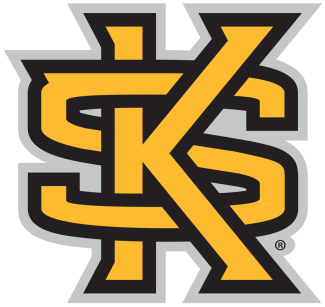Growing up in Baltimore, Cookie was the little kid on the block. He literally followed in his brother Buzzy’s footsteps when the boys were young. One day, Buzzy removed little red knobs from beneath the legs of their mother’s breakfast table and put one on the end of his lacrosse stick.
“Naturally, I did the same,” Cookie Krongard said. “That was 75 years ago, and I’ve never played with a stick that didn’t have that same red knob on it. There’s nothing superstitious about it, but if I change sticks, I put the knob on it. I just like it.”
Krongard, an attorney who worked in the state department during President George W. Bush’s administration from 2005-08, found his lacrosse niche as a goalie and has played the position for more than 60 years. The Parkland, Fla., resident always looks for pickup games, scrimmages and tournaments.
“I challenge anyone to find a guy who has seen more rubber than Cookie,” said Todd Adler, an attackman from Cornell who plays with Krongard today. “His longevity is unparalleled in lacrosse, or any other sport.”
Another current teammate, attackman Bob Leland, agrees.
“When I first met Cookie, I was in shock and awe,” Leland said. “Not just because of his age, but because of his knowledge of the sport and how in tune he is with the lacrosse community. Everyone knows him.”
To say Krongard is one of the best goalies in history is an understatement. But you won’t hear him talk much about his accolades. In fact, Michael Sowers, the former Princeton attackman who now plays at Duke, had to hear from other people the legend of Cookie Krongard.
“It speaks to the type of person he is,” Sowers said. “He’s extremely humble. I cannot stress enough how much he has impacted me and the Princeton lacrosse program.”
GETTING STARTED
Krongard was not always a goalie. He played attack and then faced off as a midfielder. In those days, there was no such thing as a FOGO.
“My brother was one of the best faceoffs of all time,” Krongard said. “He was a faceoff guy, so I became a faceoff guy.”
Krongard’s high school team’s star goalie graduated at the end of his sophomore year. The coaches were looking for a new goalie and liked that Krongard was athletic and quick. He has been a goalie ever since then.
After high school, Krongard followed in his brother’s footsteps once again, this time to Princeton. He was a three-year starting goalie (1959-61) and led the Tigers to the Ivy League championship all three years. Playing against Cornell in 1960, Krongard made 20 saves and ran 70 yards to score a goal — rare for a goalie — to help Princeton clinch the Ivy League title. In fact, the Tigers never lost an Ivy League game with Krongard in goal. He was first-team All-Ivy League in 1960 and 1961, an honorable mention All-American in 1960 and a first-team All-American in 1961. His senior year, he was named outstanding goalie in the country.
“Lacrosse is a terrific game. It’s really who I am in a sense, in terms of commitment and dedication,” Krongard said. “It’s a lot like life. It’s teamwork, but it’s also individual drive, integrity — to the game and to your teammates — and loyalty.”
Krongard was a freshman at Princeton when his brother was a senior, but the two didn’t play together because at that time, freshmen weren’t eligible to play varsity. They finally got the chance in 1966 while playing with Mount Washington Club in Baltimore.
Buzzy Krongard, best known as the former executive director of the CIA and CEO of investment bank Alex. Brown & Sons, also is a member of the National Lacrosse Hall of Fame. They were the first brothers so honored. He was the captain of the first world champion U.S. national team in 1967.
Back then, before the NCAA, there was a national open championship where the best club teams played the best college teams. With the Krongards leading the way, Mount Washington beat Navy for the championship.
“It was the only game the great Jimmy Lewis lost,” Cookie Krongard said. “We beat him at Navy-Marine Corps Stadium in Annapolis.”

PHOTO COURTESY OF PRINCETON ATHLETICS
Krongard was a two-time All-American goalie at Princeton, notably making 20 saves and running the length of the field to score in a 1960 win over Cornell that clinched the Ivy League title.
Krongard’s favorite game, however, was that Princeton-Cornell tilt in 1960. There has always been a great lacrosse rivalry between the two schools and both teams were undefeated in the Ivy League that season. It was the last game of the year.
“I made a save in the opening quarter, dodged a bunch of guys and ran down the field and scored,” Krongard said. “It was the goal that stood up for a 6-5 win. I was the first goalie known to have run the length of the field and scored a goal, and it was the goal that won the Ivy League championship.”
Krongard’s 20th save of the game came with six seconds left. He denied Cornell’s All-American midfielder Dave Dresser to preserve the victory.
“That game has marked my career because I started it with a goal and finished it with a save,” Krongard said. “It was pretty good.”
Krongard went on to become an eight-time USCLA All-Star and two-time USCLA Player of the Year (1968 and 1974).
“He set a high bar for his performance and standard of excellence and he lived up to it,” said John Walters, who played against Krongard as an All-American and the country’s top scorer at Dartmouth and with him on the New York Lacrosse Club. “He always knew where the shot would be coming from and where it would end up. He has played at a high level for an extraordinary period of time.”
Bill Morton, a halfback in football and All-American in lacrosse at Dartmouth who also played for the New York Lacrosse Club, characterized Krongard as a natural athlete who also worked extremely hard.
“Cookie had an incredible knowledge and experience in the sport and he shared that with all of his teammates,” Morton said. “I benefitted from that and I will never forget it.”


























































